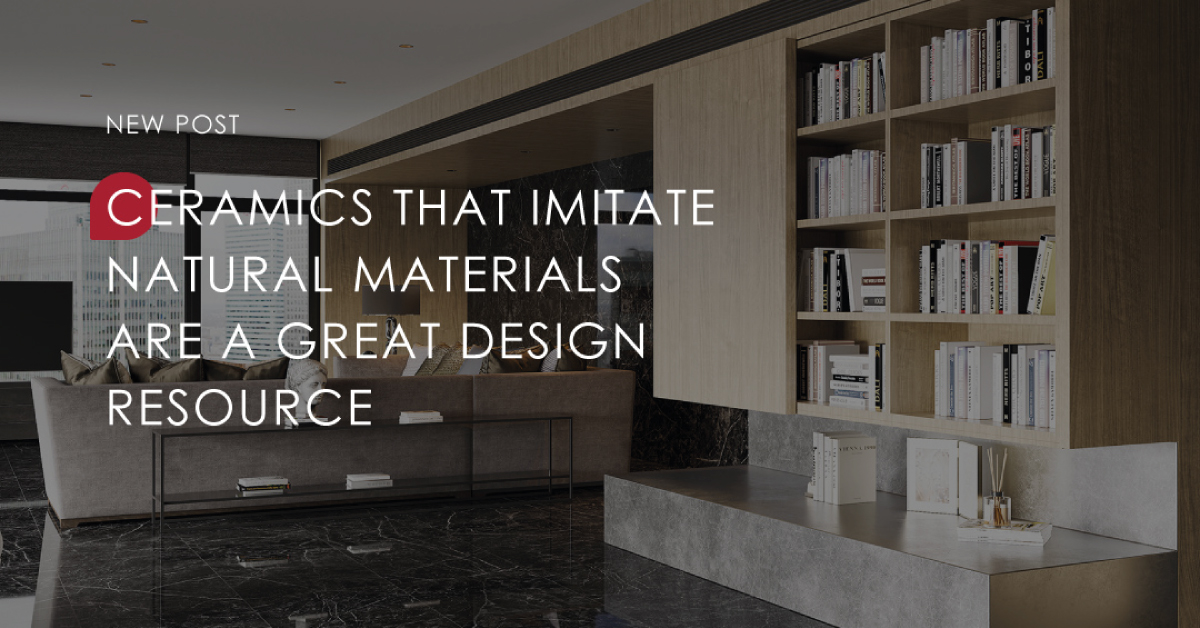Ceramics that imitate natural materials faithfully reproduce all their details with the advantages of ceramic gres.
Wood, natural stone and other more refined materials such as marble are particularly appreciated in the interior design and architecture sector. That is why the ceramics sector has spent so much time researching their design in detail. Nowadays, ceramics manages to transfer these trendy materials so faithfully that they almost look like the original material. Let’s take a look at some of its technical and aesthetic advantages.
Firstly, ceramics are extremely resistant, something that does not always apply to natural materials. A clear example is marble, which can be scratched relatively easily if we are not careful. The same goes for wood, which is more sensitive to scratches or knocks and can leave marks on its surface.
Maintenance is also another important point to take into account. Floor and wall coverings made of natural materials require more constant and exhaustive treatments. This is the case of wood, for example, which needs varnish or oil every two years to preserve its appearance and improve its resistance, as well as special cleaning products.
More porous natural stone also requires treatments such as pore saturation before it can be used. With ceramics, you only need to be careful not to use aggressive cleaning methods and products – hot water and a cloth will keep them looking as good as new!
But one of the strongest points of ceramics is its appearance. The whimsical designs of nature can nowadays be transferred to ceramics in great detail. On the one hand, the wide range of colours is so wide that it is possible to reproduce stones and woods in all kinds of colours: grey, black, white, beige, brown… in cooler or warmer tones. The different natural aspects recreated by ceramics go even further thanks to the geometric or floral patterns that can be engraved on the tiles.
In tactile terms, ceramic tiles have also evolved and offer textures reminiscent of the fine grain of stone or the relief of wood. Thanks to this relief, we can achieve innovative shapes for more contemporary pieces, such as the undulations of the dunes, or the undulations of the sand dunes.
In addition, this texture allows us to reinforce the porcelain tile collections with high anti-slip performance. Our collections with SLIP-STOP finish respond to the double challenge of achieving beautiful and non-slip spaces thanks to a smooth texture that is easy to clean, without the need for additional maintenance.
Finally, the formats also allow for multiple visual effects that reinforce the natural design of the final piece.. We can find small square formats that evoke small stones, more elongated or wider wood-type tiles to cover surfaces in different ways… As well as laying shapes as varied as herringbone or underground tiles.
If you liked our post on “The pros of ceramics that imitate natural materials” you can find more by clicking here.
You can also follow us on social networks for more tips on ceramics:

